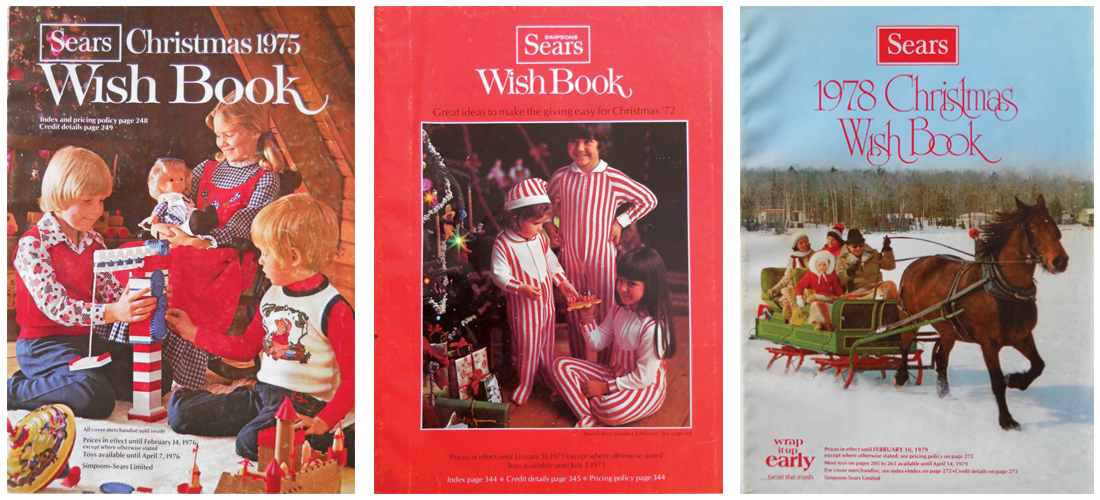
Catalog of Memories
No room at the inn for the Wish Book
By Tom Allen
Say it ain’t so. Not at the most wonderful time of the year.
Recently, Sears announced they were closing 142 stores before the end of this year. At its height, America’s largest retailer boasted over 4,000 stores. Decades of lagging sales and plummeting revenues reduced the number to less than 1,000. Fingers point at everything from out of touch CEOs to blasé brands. I beg to differ. The reason? They messed with the Wish Book.
In 1993, Sears stopped publishing beloved big-book catalogs and reduced the size of the Christmas Wish Book, a holiday tradition since 1933. My generation circled Rock’em Sock’em Robots, Chatty Cathys and Electric Football games with vibrating, metal fields. We showed our parents pictures of Milton Bradley games like Barrel of Monkeys, Mousetrap and Twister. Remember Operation and “Cavity Sam,” with his red light bulb nose? Sam’s “Adam’s Apple” was easy to remove. Likewise his “Wrenched Ankle.” Going for the “Bread Basket,” worth $1,000 in play money, was the real test of hand-eye coordination and fine motor skills. Touch that metal with those tweezers — the buzzer sounded and Sam’s nose lit up. Doggone it! But we loved it. “Batteries Not Included” meant our stockings held an 8-pack of double-A Evereadys. Years later, we’d slip the same 8-pack, along with bubble gum and a pair of socks, into our kid’s stockings, just like our parents did. Thanks to the Wish Book, boys might pull out Hot Wheels; girls, Easy Bake Oven accessories.
Eventually, we ditched the Wish Book. Thought we’d outgrown it. Clothes, no longer frowned on, became acceptable under the tree. Who needed a Wish Book, we thought, when slick mail order offerings hollered at us from October until early December. As young adults we circled item numbers from Lands’ End catalogs, underlining sizes and colors to make sure whoever filled out the order form or called toll-free would get it right. We had to be at least as preppy as our best friends. We dog-eared pages from L.L. Bean’s collection of duck boots and flannel shirts, ’cause if you didn’t go for poplin and prep, try rugged and woodsy. For some, toll-free ordering from folksy towns like Dodgeville, Wisconsin, or Rockport, Maine, added to the mystique of the purchase. Am I really talking to someone who lives in Dodgeville? How cool was that?
Then along came the internet. Who needs toll-free numbers and mail order forms when you can shop online? Quick and convenient. Yes, I saved that credit card number, but they always ask for the security code. “Honey, will you hand me my wallet?” Need more choices? Hello Amazon Prime. For 120 bucks a year, get everything from toilet paper to toffee in two business days. But with convenience came overwhelming choices. Clothes shopping? Scroll through page after page of stonewashed denim or polo shirts and you still can’t find what you want. Narrow that search. Surely a middle-aged man, with a receding hairline and slight belly bulge, can find an alternative to skinny jeans. All I want is a short-sleeved navy polo — no pockets, hemmed sleeves or, Lord forbid, a monogram. Just a few colors, please. I’m fine not receiving a sweater on Christmas morning in “light beetroot red.”
In 1886, Richard Sears, a railroad worker, started selling watches through fliers and mail order catalogs. The business morphed into Sears Roebuck, selling everything from shoes to furniture to musical instruments. You could even buy a house from Sears. Exclusive brands like Kenmore, Craftsman and Diehard proliferated in American kitchens, tool sheds and cars. The Sears Tower, built in 1973 in Chicago, was once the tallest building in the world as well as the retailer’s headquarters.
By the 1980s low-price competitors like Walmart, Kmart and Target were opening big box stores. Sears tried to snag the dot-com market, acquired Lands’ End to beef up their apparel, and merged with Kmart. Nevertheless, decline continued. Sell-offs increased. The company became a shadow of itself during the ’70s and ’80s.
Last year, after listening to customers recount Christmas Wish Book memories, Sears brought the catalog back. But the print version, as well as online and mobile editions, failed to attract baby boomers who remember waiting for the iconic Christmas catalog to arrive by mail, months before Santa slid down the chimney.
Everything has its season. Sadly, perhaps Sears has had theirs. Still, memories of finding everything on my Wish Book list under the tree are priceless. Or, at least they beat the necktie with three Wise Men riding camels. I know. It’s the thought that counts.
Good luck, Sears. At Christmas, miracles still happen. PS
Tom Allen is minister of education at First Baptist Church, Southern Pines.





